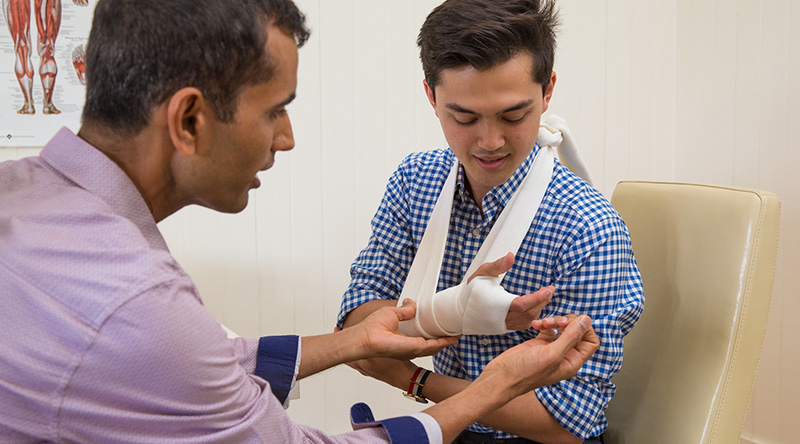
Massage and Inflammation – Part 1
10 Sep2019 Tagged as
Posted by Evolve College News
Inflammation in the body is a vast topic. With so many facets of information this article will be split into two parts. For Part 1, we will explore the basics of what inflammation is as well as how it is treated. For Part 2, we will explore the relationship between massage therapy and the treatment of inflammation.
What is inflammation?
Inflammation is an essential part of the immune system’s response to injury or infection. When a part of the body becomes inflamed, it is a sign that the body has registered a foreign invader, such as a virus, or that an injury has occurred. The immune system then begins its work to heal the damaged tissue or expel the virus or infection. Inflammation, whilst at times very uncomfortable, is actually essential to the body and without it, infections and wounds would never heal.
Inflammation can be categorised as either acute or chronic. Acute inflammation is the type we would expect to see with a wound or joint injury. Acute inflammation begins rapidly and can become severe within a matter of minutes. Chronic inflammation however begins slowely and can last over several months to even years. The causes of chronic inflammation can vary from the body’s failure to expel the irritant which caused the inflammation in the first place to the result of an autoimmune disorder where the body attacks healthy tissue. The long term effects of chronic inflammation can be tissue death and internal scarring.
What are the symptoms of acute and chronic inflammation?
The main symptoms of acute inflammation include:
- Redness
- Pain
- Swelling
- Heat
- Inability to move the affected region
The following are some of the symptoms of chronic inflammation:
- Fever
- Rash
- Fatigue
- Joint pain
- Sores that present in the mouth
- Pain felt in the chest and abdomen
It is important if you are experiencing any of these symptoms to consult with your healthcare professional, as many of these can be an indicator of an underlying health condition.
How is inflammation treated?
Treatment for both acute and chronic inflammation varies. Acute inflammation usually has a reasonable cause so treatment of the irritant should be focus point rather than the inflammation itself. However plenty of rest, iceing the area, applying a compression wrap and keeping the area elevated can support in reducing the severity of the inflammation. Chronic inflammation has varying treatments – some medically prescribed whilst others only with strong anecdotal evidence to support.
Currently, there are a few different schools of thought as to what can actually effectively treat and heal chronic inflammation in the body. As with any medical condition, proper diagnosis and medical treatment is essential. Medically, chronic inflammation is treated with anti-inflammatory drugs, such as over the counter ibuprofen or aspirin or with corticosteroids.
Additional options which may support in reducing chronic inflammation include adopting a ketogenic diet, where the body gets most of its energy from fat reserves rather than carbohydrates, adding certain foods and spices to one’s diet or taking supplements such as fish oil and lipoic acid. Additionally, exercise and an all round healthy lifestyle have been claimed to help – which also includes massage therapy and having regular massages.
Part 2 next week will explore the relationship between massage therapy and inflammation, as well as the recommendations for treating clients suffering from both acute and chronic inflammation.
